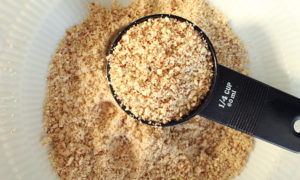Estimated reading time: 2 minute(s)
The name probably does not sound familiar to you. Fascia has always been around, but only until a few years ago did people start actually paying attention to it. Before it was just considered as tissue in the body without many functions. But experts now say that the fascia is something alive and very important for general health, for the ability to move, and for the proper functioning of internal communication systems.
In fact, many studies suggest that stiffness in the thoracolumbar fascia, which surrounds the spine, could be responsible for the vast majority of back pain.
What is fascia?:
It is the connective tissue that surrounds everything, a large membrane that covers organs, tendons, cells … connecting everything together. It is basically composed of collagen, elastin, reticular fibers and a large amount of water.
Functions of the fascia:
It is the structure in charge of keeping each organ in its place. It is what unites everything inside the body because without fascia the bones, viscera, organs … would simply collapse and fall to the ground.
- Lubricates: allows muscles and organs to slide easily against each other.
-
Detoxifies: the fascia, also made up of the lymphatic ducts, helps transport toxins and waste.
Problems:
Due to age, a sedentary lifestyle, or injury… the fascia becomes stiffer, drier and shortens. This can cause everything from stiffness and loss of flexibility to chronic pain, tendonitis, and even loss of range of motion.
Poor posture, stress, or lack of rest can lead to all of the above. Dehydration and poor diet can also be the cause.

Diet for a healthy fascia:
A lot of protein: the fascia is in a large percentage collagen, a structural protein responsible for our teeth being strong and also for our skin being elastic and resistant. I recommend an extra contribution by using this Vegan Whey Protein, it is my favorite since it is 81% protein, it is low in fat and carbohydrates and it also adds a delicious chocolate flavor to my smoothies and yogurt bowls.
Vitamin C: this vitamin is essential in the production of collagen, so eating foods such as citrus fruits, broccoli, tomatoes or cauliflower is important. Often I give myself a vitamin C report with this delicious Broccoli Puree with Superfoods recipe.
Essential amino acids: are those that the body needs but cannot produce, so they have to obtain through food. For me, the most powerful foods are lean meats, eggs, quinoa, and seeds.
Increase foods high in magnesium: this mineral helps maintain elastin fibers by improving flexibility and stimulating collagen production. My preferred way to get magnesium is through the Crunchy Almond Cream that I spread over my breakfast pancakes on the weekends.

Hydrate well: drinking plenty of water helps keep the fascia hydrated. Do not forget that 75% of the composition of the fascia is water!
Benefits of working the fascia:
- Improves posture
- Tension is released
- Improves muscle tone
- Pain is removed
- Improves athletic performance: Sometimes a stiff fascia prevents muscles from developing to their full potential.
- Prevents cellulite

Exercises for fascia:
Fascia are tissues which serve a different purpose than our muscles. The best thing to do to strengthen the fascia is by maintaining sustained pressure on certain parts of the body for long periods of time. This makes the tissue thicker, more resistant, more flexible and longer. Here are some suggestions:
Rolfin massage: a deep massage technique that is directed to the connective tissue, and has the aim of rebalancing the whole body.
Acupuncture: the needles act on the fascia, releasing the tissue and producing an analgesic effect.
Yoga: stretching in different postures stimulates the fibroplasts, which allows them to generate more collagen and therefore, the fascia becomes stronger and more resistant. The best type of yoga for that is Yin Yoga.
Foam rollers: they allow us to roll on different parts of the body, and thus relax the fasciae, undoing the possible knots that may form.












